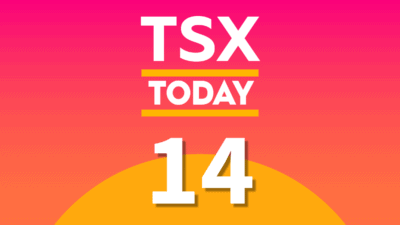After shares of Dollarama Inc. (TSX:DOL) peaked at more than $90 each, I started to get bearish on the company.
There was still plenty to get excited about. Canada’s slowing economy is still a good thing for the company. Consumers tend to shop at lower-priced chains when times get rough, seeking the same goods at a better price. What’s priced lower than the dollar store?
Other retailers are getting hammered by the low Canadian dollar. Since Dollarama has much healthier margins than most, it’s been able to absorb some of this increase in costs. Expanding the company’s maximum price to $3 was a stroke of genius as well. Customers are willing to stomach a $0.50 increase in the price of an item, even if it is a 50% increase. In fact, most will barely notice.
Finally, there’s the secular growth story. Dollarama still has plenty of potential to expand before it saturates the market. In the United States dollar stores are much more popular on a per-capita basis than they are in Canada. Dollarama can potentially double its footprint from the 1,005 stores it currently owns.
My concern was with the valuation. Back in late November when I wrote the article, I noted that shares were trading hands at more than 35 times trailing earnings. Even though Dollarama was killing it by posting great revenue and profit gains, 35 times earnings is a lot to pay for a company.
On a forward earnings multiple, it wasn’t much cheaper. Shares traded at 32 times analysts’ expectations for 2016 earnings and 28 times the consensus estimates for 2017. No matter how you slice it, shares were expensive.
It turns out my timing was pretty good. Dollarama released some slightly disappointing earnings in December, which sent shares reeling. General market weakness took care of the rest. In just over two months shares are down some 20%.
Usually when a stock sells off 20%, it’s a buying opportunity. Is that the case with Dollarama today, or does it still have further to fall?
A better valuation
As I type this, Dollarama trades at 25.9 times earnings. That’s expensive, but a certainly cheaper than before.
There was a lot to like about the recent quarterly earnings, too. Revenue was up more than 13%, which included same-store sales increasing 6.4%. Earnings per share surged more than 40%, rising from $0.55 in the third quarter last year to $0.78 this year. Even margins were up smartly.
Management also started buying back shares aggressively. Approximately 2.1 million shares were repurchased in the quarter for a total of $188 million. If it can keep up the share repurchases, Dollarama will decrease its shares outstanding by 6.5% in the next year.
The fact is there aren’t many good growth stories to choose from in Canada. Natural resources look like they’ll be weak for years, something that will filter out and affect the rest of the economy. There are very few growth stories left that haven’t been crushed by the decline in commodities. Thus, investors are going to pay a premium for growth.
The issue becomes just how much investors should pay for the potential. Dollarama is expected to earn $2.83 per share in 2016 and $3.25 per share in 2017. This puts shares at 25.4 times and 22.1 times 2016 and 2017 earnings, respectively. The stock is expensive, but not excessively so.
Dollarama shares could end up going lower still, especially in today’s turbulent markets. But at the same time, the company is finally approaching a more fair valuation. Unless the growth story really changes, Dollarama is never going to be cheap. The best investors will do is buy it when it’s only slightly overvalued.
If Dollarama can maintain its growth rate, today will look like a terrific entry point in five years. If not, shares will likely underperform. After a 20% decline, the margin of safety just got a whole lot bigger, especially considering how not much has changed from the original growth thesis.
Bottom line?
Dollarama shares are much more attractive than they were just three months ago.
 Spring Sale
Spring Sale







